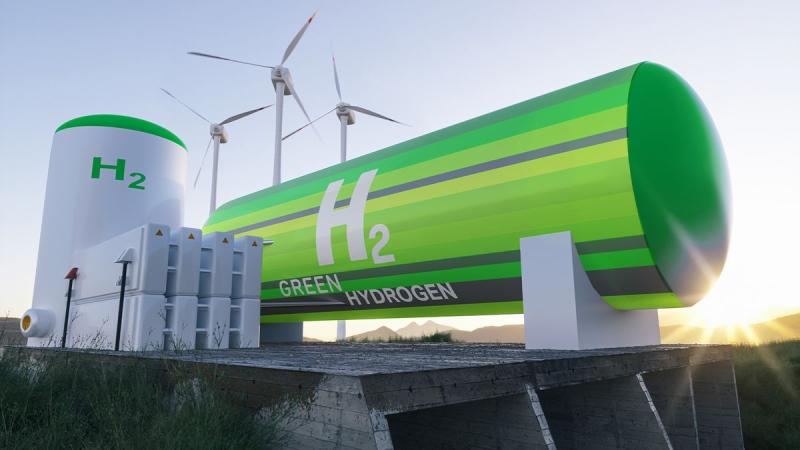Engineers use sound waves to boost green hydrogen production by 14 times
By: Deena Theresa (IntEngineering)


Another case of rediscovering lost knowledge. And the researchers will likely obtain a patent for something that used to be common industrial knowledge.
It seems the more we learn, the more we forget.

Researchers at the RMIT University in Australia have figured out an innovative, promising way to increase the production of green hydrogen by 14 times - by employing sound waves through electrolysis to split water.
According to the engineers, their invention could significantly reduce green hydrogen production costs.
"One of the main challenges of electrolysis is the high cost of electrode materials used, such as platinum or iridium," RMIT associate professor Amgad Rezk, who led the work, said in a statement.
"With sound waves making it much easier to extract hydrogen from water, it eliminates the need to use corrosive electrolytes and expensive electrodes such as platinum or iridium. As water is not a corrosive electrolyte, we can use much cheaper electrode materials such as silver," Rezk explained.
The research is published in Advanced Energy Material, and an Australian provisional patent application has been filed to protect the new technology, as per the release.
How is electrolysis used to produce green hydrogen?
Electricity is run through water employing two electrodes to split water molecules into oxygen and hydrogen gases. This process produces green hydrogen, which signifies only a "small fraction" of global hydrogen production due to the high energy required.
So, how is most hydrogen produced? By splitting natural gas, also known as blue hydrogen. Natural gas emits greenhouse gases into the atmosphere.
In their experiment, the RMIT engineers used high-frequency vibrations to "divide and conquer" individual water molecules during electrolysis.
"The electrical output of the electrolysis with sound waves was about 14 times greater than electrolysis without them, for a given input voltage. This was equivalent to the amount of hydrogen produced," first author Yemima Ehrnst said.
The breakthrough is a huge step toward using the "new acoustic platform"
Ehrnst added that the sound waves also "prevented the build-up of hydrogen and oxygen bubbles on the electrodes, which greatly improved its conductivity and stability".
"Electrode materials used in electrolysis suffer from hydrogen and oxygen gas build-up, forming a gas layer that minimizes the electrodes' activity and significantly reduces its performance," said Ehrnst, a Ph.D. researcher at RMIT's School of Engineering.
Professor Leslie Yeo, one of the lead senior researchers, said that the breakthrough was a huge step toward using the "new acoustic platform" for other applications.
"Our ability to suppress bubble build-up on the electrodes and rapidly remove them through high-frequency vibrations represents a major advance for electrode conductivity and stability. With our method, we can potentially improve the conversion efficiency leading to a net-positive energy saving of 27 percent," said Yeo from RMIT's School of Engineering.
However, integrating the sound-wave innovation with current electrolyzers to scale up the work is a challenge the team needs to work on.
Study Abstract:
A novel strategy utilizing high-frequency (10 MHz) hybrid sound waves to dramatically enhance hydrogen evolution reactions (HER) in notoriously difficult neutral electrolytes by modifying their network coordination state is presented. Herein, the practical limitations associated with existing electrolyzer technology is addressed, including the need for highly corrosive electrolytes and expensive electrocatalysts, by redefining conceptually-poor hydrogen electrocatalysts in neutral electrolytes. The improvement in HER performance is attributed to the unique capability of the intense local electromechanical coupling arising from the acoustic-forcing to 'frustrate' the tetrahedrally-coordinated hydrogen bond network of water molecules at the electrode-electrolyte interface, resulting in the generation of a high concentration of "free" water molecules that are more readily able to access catalytic sites on the unmodified polycrystalline electrode. Together with the other synergistic effects that accompany the acoustic excitation (e.g., hydronium ion generation, convective relaxation of diffusion mass transfer limitations, and prevention of bubble build-up and their removal from the electrode), the resultant overpotential reduction of 1.4 V at −100 mA cm−2 and corresponding 14-fold increase in current density, together with a net-positive energy saving of 27.3%, showcases the potential of the technology as a scalable platform for effectively enhancing the efficiency of green hydrogen production.

Tags
Who is online
556 visitors


The same thing can be achieved with mixing or, for a more high tech approach, superimposing a magnetic field onto the electrolyzer. At one time, industrial electrolyzers used plate shakers and plate wipers to do the same thing.
The researchers have applied a new gadget to address an age old problem. But the same thing has been done industrially using old gadgets. The diffusion layer on an electrode has been a known problem for over a century. And it's the diffusion layer that is the obstacle to overcome; not blinding by bubbles.
In the case of water electrolysis, hydrogen is easy to produce. It's the other half of the electrolytic reaction, producing oxygen, that's the nut buster. It's the oxygen half of the redox reaction that needs to be addressed to improve the efficiency of electrolytic hydrogen production.